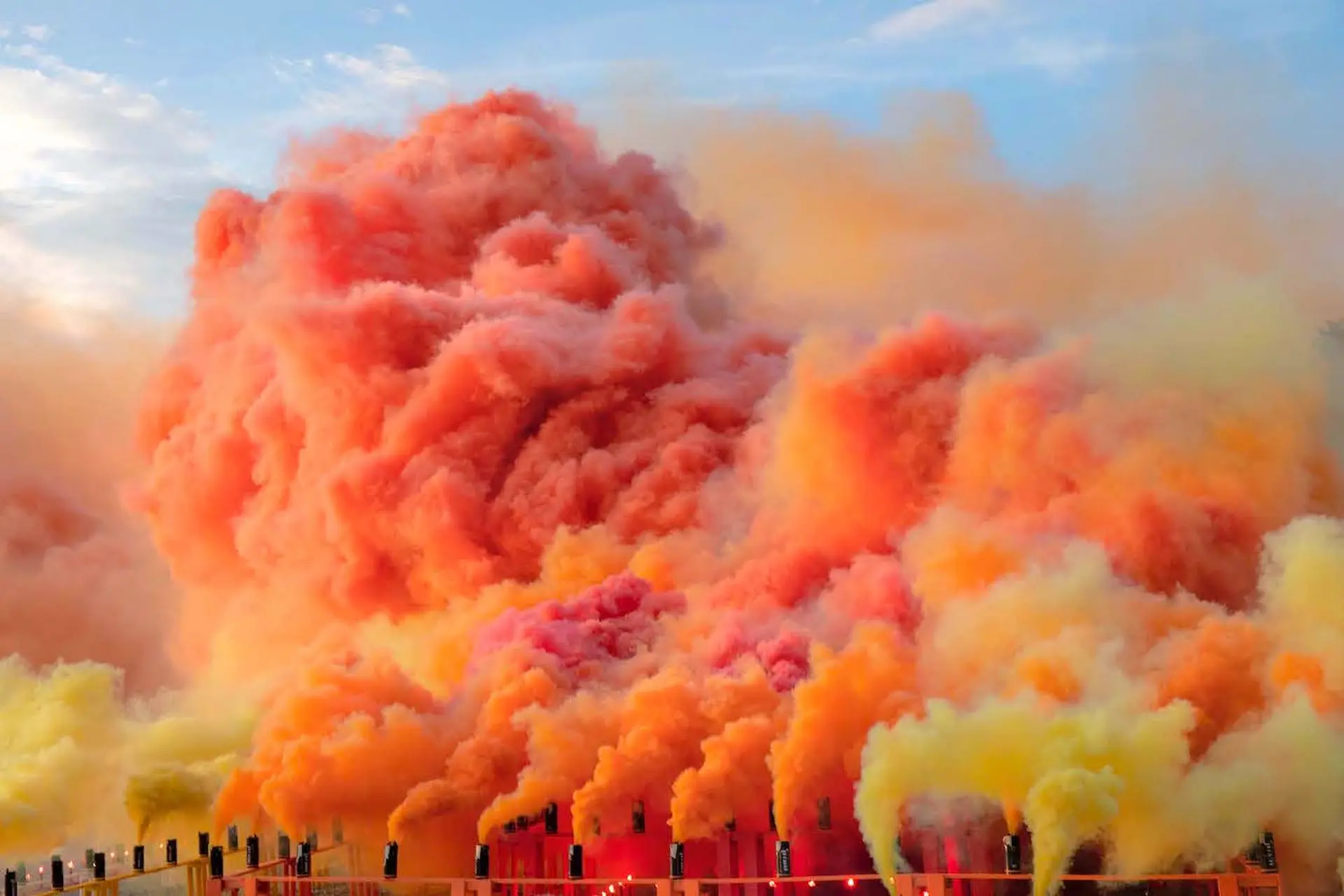Turner Prize and Sobey Award winners and Judy Chicago highlight Toronto’s second biennial

By Larry Humber
Whereas the inaugural biennial focused on the city’s lakefront shoreline, this pandemic-delayed sophomore edition is organised along Toronto’s creeks and ravines
It took a little longer in coming due to Covid-19 restrictions, but the second Toronto Biennial, What Water Knows, the Land Remembers, launches on 26 March and runs through 5 June for what is being billed as “72 days of free art”. It was originally slated for autumn 2021, the inaugural edition having taken place in autumn 2019.
That first Biennial, The Shoreline Dilemma, involved more than 15 sites, while the 2022 version is limited to only nine, with eight of them up and running and one still to come as soon as weather permits (organisers hope as early as next week). Some 100 works of art are on view, with Turner Prize and Sobey Award winners and Judy Chicago of The Dinner Party fame included. In all, around 70 local and international artists, hailing from all five continents, are on board.
The city’s second take has a slightly different focus, having “moved inland from the shoreline”, per the exhibition text. It follows several creeks and ravines, namely Etobicoke Creek, the Laurentian Channel, Garrison Creek and Taddle Creek. As in 2019, the Toronto Biennial is headed by the curatorial trio of Candice Hopkins, Tairone Bastien and Katie Lawson.
Some venues have hosted both editions, notably the Small Arms Inspection Building in Mississauga, just west of the city. The old munitions factory is adorned with photos of the women who once worked there and provides some of the 2022 highlights. The Museum of Contemporary Art (MOCA) in west Toronto’s Junction is another repeater.
The Junction is home to several sites, also taking in 72 Perth Avenue and Arsenal Contemporary Art. The nearby Mercer Union has a spectacular offering, a film by 2019 Turner Prize co-winner Lawrence Abu Hamdan, who calls Beirut home. More on that shortly. Other venues include Fort York National Historic Site and Colborne Lodge in High Park, Toronto’s answer to Central Park, and 5 Lower Jarvis Street, a short haul from Lake Ontario. Uptown is The Textile Museum of Canada. Sugar Beach, at the foot of Jarvis, will welcome Judy Chicago’s complex pyrotechnic pieces she calls Smoke Sculptures on 4 June. Smoke will be released from an offshore barge so as to be seen on shore.
Mercer Union is showcasing Abu Hamdan’s film, 45th Parallel (2022), which focuses on the Haskell Free Library and Opera House, which straddles the Canada-US border along the 45th parallel between Quebec and Vermont, hence the title. The library and opera stage are in Quebec, but the bulk of the seats are in Vermont. Access is through the American side, though there is an emergency exit into Canada.
“I don’t remember exactly when I first heard about the Haskell Free Library and Opera House, to be honest,” Abu Hamdan tells The Art Newspaper. “I think there was an article about the site being used for smuggling exotic birds that stood out to me. But the story that really brings this work to life, and what made the Haskell a point of interest for me, was the Hernandez v. Mesa case. That fatal shooting is what led me to this investigation of borders as lethal sites of negotiation.”
The case in question is a 2010 incident that took place not on the Canada-US border, but on the US-Mexico border, in which a Mexican teen was fatally shot, across the border, by an American border patrol agent. The case twice went to the US Supreme Court.
Brian Jungen, who won the first Sobey Award two decades ago, is featured at 5 Lower Jarvis Street. He is known for his use of reconfigured Air Jordan sneakers, initially creating ceremonial masks worn on the Pacific Northwest. His latest sneaker series, titled Plague Mask, brings to mind those donned by 17th century doctors as protection from “bad air”. (One wonders if the the “air” pun is intentional.)
MOCA’s ground floor is dedicated to Jeffrey Gibson’s I AM YOUR RELATIVE (2022), which is comprised of 15 moveable stages packed with books and adorned with posters, textiles and stickers with messages such as “Their Dark Skin Brings Light” and “Respect Indigenous Land”.
72 Perth features Nadia Belerique’s assemblage of plastic barrels, most filled with various objects, even tree branches, some left empty. Such barrels were used to ship goods to and from the Azores, nine islands in the mid-Atlantic. At Arsenal Contemporary Art, Amy Malbeuf’s sizeable installation of smoke-tanned moose and deer hide and raw deer hide, dominates.
Among the array of works at the Small Arms Inspection Building are Trinidad-born Denyse Thomasos’s large-scale charcoal drawings touching on the horrors of slavery. Thomasos, who died in 2012, described her work thusly: “I was struck by the premeditated, efficient, dispassionate records of human beings as cargo and also by the deplorable conditions of the slave ships.” Camille Turner’s commissioned three-channel multimedia installation Nave (2021-22) is another must-see here.
Colborne Lodge features the organic sculpture of Marguerite Humeau. Her work pays homage to a former occupant who was all but imprisoned there by her husband. Finally, The Textile Museum showcases the colourful works of Inuit artists Janet Kigusiuq, Victoria Mamnguqsualuk and their mother, Jessie Oonark.
- 2022 Toronto Biennial of Art, 26 March-5 June, various locations.